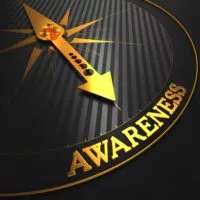The Power of Habit by Charles Duhigg, the compelling New York Times bestseller, offers profound leadership lessons and offers an empowering perspective to those striving to take control of our lives. The book addresses the everyday habits that shape us and demonstrates our ability to change them, impacting our lives, our work and society.
Duhigg demonstrates that positive and negative habits are developed in a three-part process, forming a Habit Loop: The Cue or trigger, The Routine, and the Reward. For example, we feel stressed (The Cue), reach for a donut or a cocktail (The Routine), and feel momentary gratification (The Reward). When repeated often enough the cycle becomes automatic, creating a habit. As the pathways of the brain (I think we have at least one brain pathway-related post) controlling habits become deeply engrained, like well-worn ruts on a dirt road, we stop thinking about our responses to Cues, and react automatically.
Fortunately, throughout life, as we continue to learn and develop, the brain can establish new neural pathways. While well-worn paths will not disappear entirely, the brain can fine tune itself with the formation of new pathways or neuroplasticity, to enable us to develop new habits. Turns out, you CAN teach an old dog new tricks!
By increasing self-awareness, reflecting on your observations and developing and executing an Alternative Response Plan, a leader can reprogram an automatic, habitual response to stress and form more constructive habits and tools for handling adversity. This can have a dramatic impact of the leadership success. As an executive client recently observed, “When anxiety and stress take up a lot of brain space, it impacts my effectiveness.”
The following process can help guide the formation of new habits and routines to help combat stress and anxiety.
- Step 1. Increase Self Awareness:
- Ask yourself; What are my stress triggers or cues?
- Keep a one-week chart to pinpoint your key stress triggers (see below for sample).
Divide stressors into key categories – Family, work, money, etc.
You might subdivide stressors into narrower categories at Work: a specific project, subordinate, vendor, etc.
Keep notes on aspects each Presenting Stressor Situation: Mitigating Circumstance (what caused the stress) Time of Day the stress was realized, note additional reflections (what else you notice – you did not get enough sleep, were hungry, not exercised). - Note your reaction to stress:
- Where did you feel this in your body? Was your heart racing? Did you feel overheated? Sweaty palms?
| Weekly Stress Tracker | |||||
| Presenting Stressor Situation | Mitigating Circumstance | Time of Day | Reflections | Reaction – Physical, Emotional etc. ` | |
| Monday | |||||
| Tuesday | |||||
| Wednesday | |||||
| Thursday | |||||
| Friday | |||||
| Saturday | |||||
| Sunday | |||||
- Step 2. Reflect on Your Observations:
- At the end of the week review your chart and notes.
- Rank your top five stressors.
- What do you notice.
- What trends do you see?
- What have you learned?
- Step 3. Develop and Execute an Alternative Response Plan:
Once you have developed a sense of your key stress triggers and your routine responses, you are in a better position to break your cycle and develop an alternative response set. By tracking weekly stressors, you notice that a colleague or situation evokes an immediate, habitual stress reaction.
As you anticipate these reactions, executive your Alternative Response Plan:
- Take a few seconds to break the cycle. Breathe. (Consider and app like CALM)
- Objectify the situation: Come out of your head. Make a list or write in a journal.
- Develop your measured response
- Keep track of your wins. Each time you successfully transform your reaction celebrate your success. Throw a penny or a jelly bean in a jar. Watch the pile grow.
By increasing mindfulness, we can successfully reprogram our habitual reactions to stress, enabling new, habits to form and take hold, increasing leadership effectiveness and personal satisfaction. Every leader can find their path to reprogram the automatic response to stress. When anxiety fills up your brain space, what do you do? We would love to hear your suggestions – please add them below!
_____________________________________________________________________________________________________
Sharon works with senior executives on establishing new, productive habits that serve them and their teams. Schedule a complimentary consult with her today.

